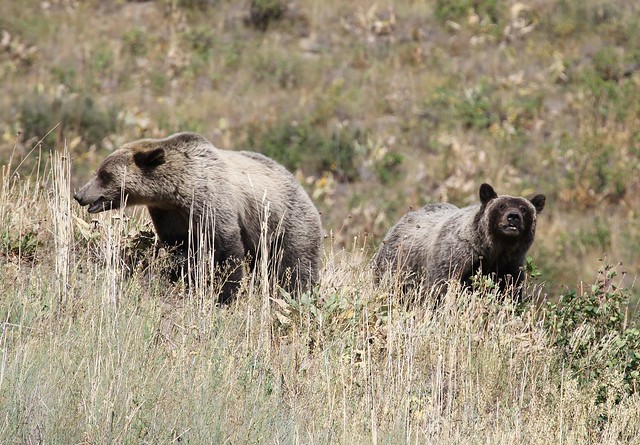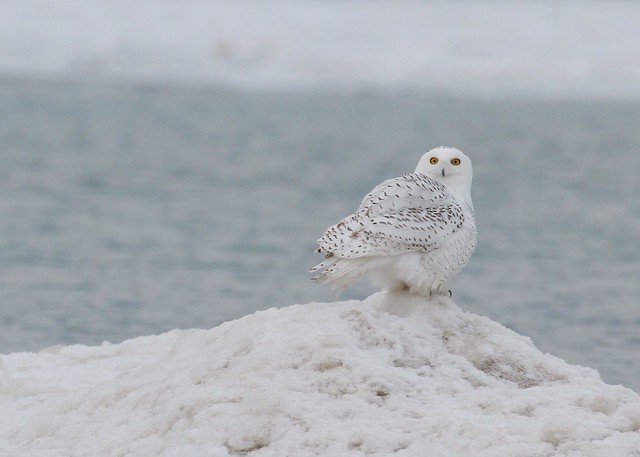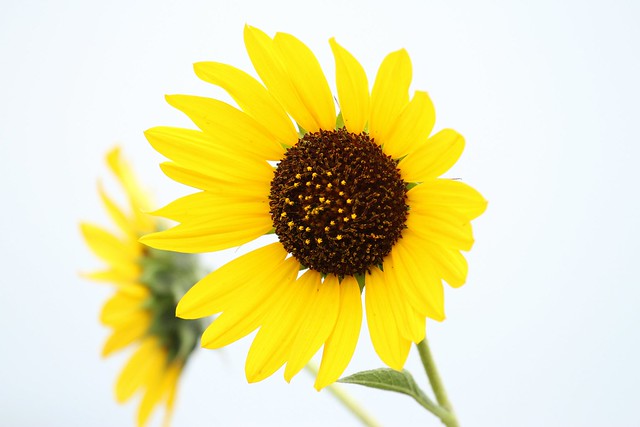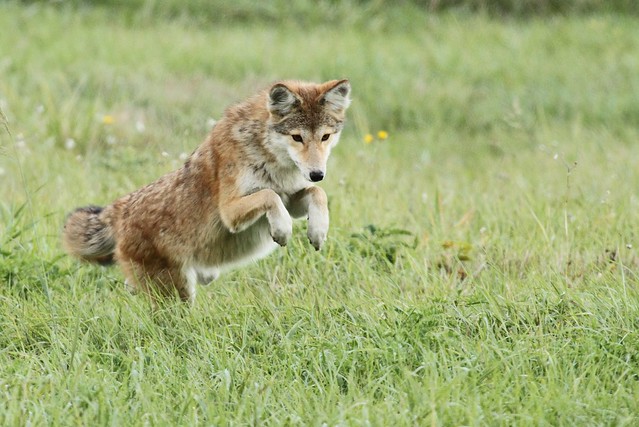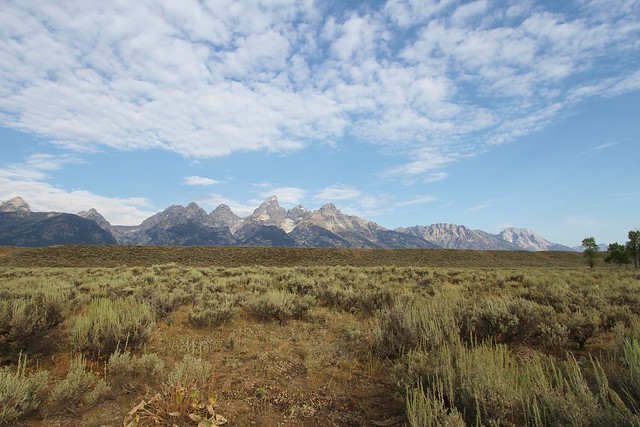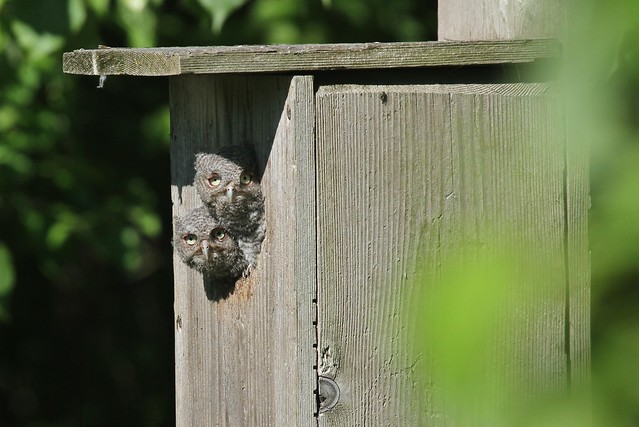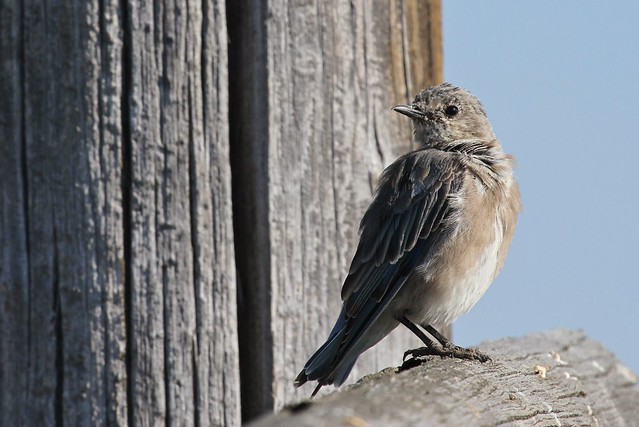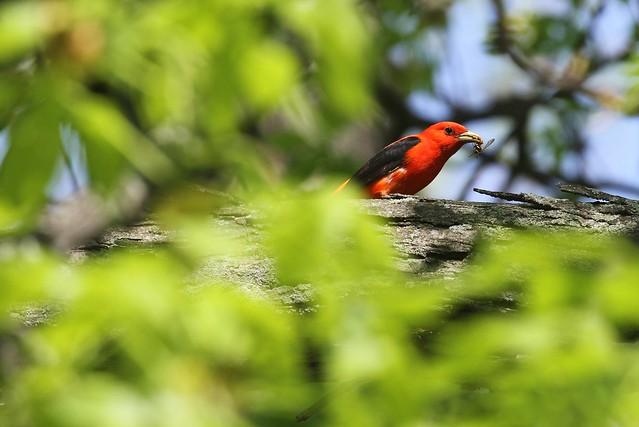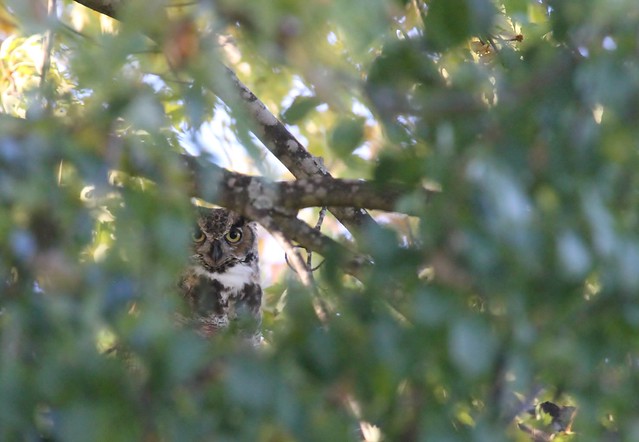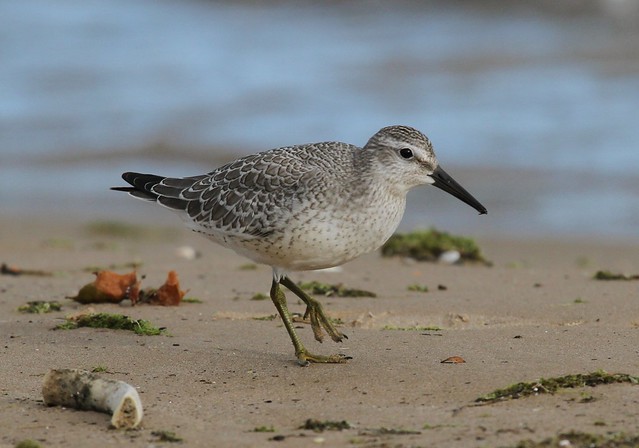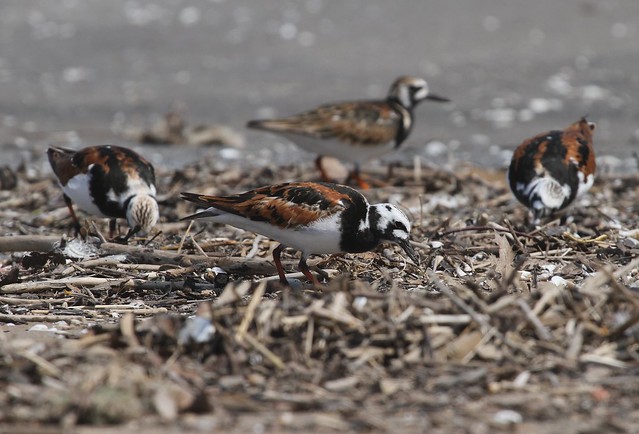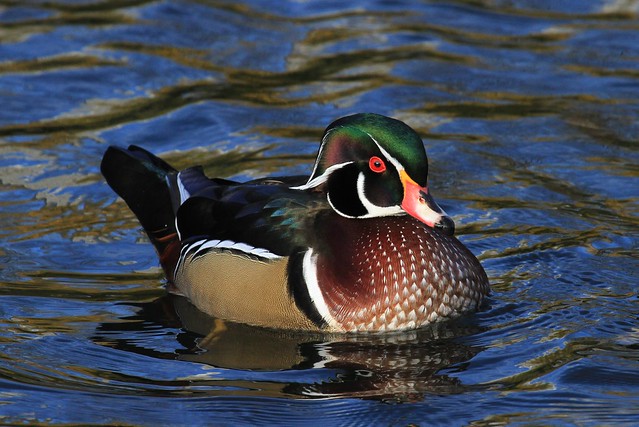#10- Northern Hawk-Owl
Starting off the countdown strong here, with a creature that is not commonly seen, and is always a treat to see. It seems like it couldn't have been this year that I took this photo, and, if all had gone according to plan originally, it wouldn't have been taken this past January! I trekked up to where this owl had been seen in Door County WI in mid to late December of 2012. However, I failed to find it, and found out on the way back down (5 and a half hour trip each way) that my directions were bad! If I had gone just about a mile further north, I would have found it! Drat!
That really stung, so two weeks later, I once again made the trip up there, this time to the right spot. And as you can see, the results were much better!! The fact that I failed miserably due to my own mistake the first time made this photo all the more enjoyable. I was also able to get some video of it. The reason why this ranks as number 10, is because of a few factors. One, it is a rather dark photo, due to poor lighting conditions. Two, it is sitting on a man-made perch, being a power line. But still, the story and the bird make this shot worthy of my top 10 for the year! The video I captured of it is included below.
#9- Grizzly Bears
A trip to Wyoming was a major highlight of my year this year. I wanted to see Grizzlies, and was planning on Yellowstone National Park. Unfortunately, wildfires abounded in Yellowstone at the time we were there, so instead we stuck to Grand Teton National Park. The bears were plenty active in this area anyways! The night before, three Grizzly Bears were up high on the mountainside over the roadway that we took to go back to our lodge. The next day, we saw two just a tenth of a mile away from where they were the last time.These two were way up there, so I asked my mom to pull the car over so we could watch them. One of them took off at full speed down the mountainside, headed almost directly toward us! While my mom had a panic attack, I wanted to see where this was going, and there was still plenty of time to react. So, standing behind the vehicle and shooting over the top of it, I proceeded to watch as what appeared to be playfulness between two Grizzlies brought them to within 150 feet of us. They stopped near a patch of bushes and trees, and then slowly ambled off along the mountainside, when I captured this shot. That moment of excitement and the fact that my heart wouldn't stop pounding until about an hour later, make this somewhat average sharpness photograph #9 on my top 10 list!
#8- Snowy Owl
This photo is the most recent, being taken earlier this very month! Snowy Owls are birds of the high arctic, in the summer. In the winter, depending on the availability of prey in the arctic, they will move south in varying degrees. The more food available up north, the less likely they are to come far south. This year is one that is known as an irruption, or heavy southward movement of owls that are looking for a food supply that is able to sustain them through the winter, and plenty of owls have made it as far south as Illinois already, such as this one which showed up in Chicago!
I have seen and photographed Snowy Owls before, but I was really hoping to get some more images, especially since opportunities were everywhere. As many as four to five Snowy Owls had been seen in days prior to my trip into Chicago, at Montrose Harbor. As soon as I arrived at the beach, a couple of great photographers and friends showed me four that were at the moment, seeking refuge on and under the pier. The one under the pier was there because it had been through a traumatic experience with a rival predator, a Peregrine Falcon. The falcon had dove at the owl while it was out on the beach. Peregrines have the ability to dive at about 200 miles per hour, so it would be very intimidating to have that occur. The owl flew under the pier for protection after the attack, and stayed there for quite a while. This was what had happened before I arrived, and why I saw the owl sitting under the pier, which I thought to be unusual.
I normally shoot with a lens that has a maximum reach of 400mm, which with my crop censor camera body (Canon 7D), has an equivalent to 640mm on a full-frame camera (say, a Canon 5D Mark III). This was not enough reach however, but a very generous friend allowed me to use his 600mm setup while he took care of some business. If it weren't for that kindness, this shot would have been unachievable. Among the four owls, one was the most active, and I spent a lot of time photographing it in flight as it hunted ducks out on Lake Michigan. It was unsuccessful in its hunting. But, as it got closer to sunset, the one under the pier decided to join the party, and emerged from its haven and landed out on a pile of ice. That was how I got the shot seen above.
Now, as an important message, yes these owls are enjoyable to view and photograph. And yes, they are currently scattered throughout our area, but take great care and caution if you do view one. I kept a respectable distance (never get closer than 50 meters), and never approached the birds. It is important to keep back, so they aren't stressed, as stress can help disease and starvation progress. DO NOT use flash if you photograph an owl, and DO NOT force it to fly. I was only this close because the owl flew towards me. It is a matter of life and death! This owl was difficult to capture in tough lighting, but this shot easily deserves #8!
#7- Sunflower
Now, after a long story, it's nice to have a short and simple one. This sunflower was taken in Nebraska, on my way to Wyoming. Plain and simple, I love the isolation my settings created by making a pure white background out of an overcast sky. The color is vibrant and really pops! Plus, the focus in the center is exceptional if I do say so myself, and that is why a simple sunflower makes #7 on my list. A simple subject, but a great shot technically speaking! More flashy things are yet to come as you read on!
#6- Coyote
This coyote made for a great photo opportunity as it hunted for its next meal at my favorite place to find coyotes, Fermilab in Batavia IL! Here, the coyote is pouncing on a rodent that it heard in the grasses nearby. I always wanted to capture an action shot like this, and this is my first time being successful! This shot deserves the #6 spot on my list, because of its composition, the action that it captures, and because coyotes are beautiful animals! That is, as long as they keep away from my dog!
Alright, now we are on to the top five!! Thanks for sticking with it this long, I hope you continue along!!
#5- Red-Tailed Hawk
This dramatic capture was taken at Northerly Island in Chicago. Here, I found an obliging young Red-Tailed Hawk and proceeded to tail it as it hunted for prey. The bird surprised me by flying and landing atop a chain link fence within six feet of me after finishing a meal! That is how I was able to get this full-frame portrait. This hawk made for a couple of hours of enjoyable viewing, and made my day, along with several others. The full story can be found here.
http://www.ilbirds.com/index.php?topic=52325.msg83543#msg83543
The lighting's dramatic contrast in this image, along with the great clarity and detail present in the feathers and face, make this image one of my favorites of all time! But, I feel I still captured some better shots. So the countdown continues with #4!
#4- Grand Tetons Mountain-scape
Wyoming is a very scenic place, and the Tetons are especially so. Glorious mountain peaks are visible so long as the sky is clear anywhere in Grand Teton National Park, but I found River Road, a road that goes along a river valley, to be a particularly special view. This photo was taken in a valley filled with sagebrush habitat, and that is why you can see the hills in front of the mountains. At the top of those hills is where the main highway is, but I was down on a road that required 4-wheel drive in order to take it.
Early morning light that was subdued due to light cloud cover gave this image a very special lighting effect, by softening the light the clouds acted as a diffuser would on a flash. There was an even light on the entire landscape, except for towards the top of the mountains. Even when it was cloudy, the peaks of the mountains sometimes were lit by the sun. This was my favorite landscape shot taken during my trip, and since it reminds me of a great trip every time I see it, it makes #4 on my list!
#3- Great-Horned Owlet
I had the pleasure of being able to watch a Great-Horned Owl nest from the laying of the eggs, all the way through to the fledging of the one owlet. This shot was taken the very first day the youngster was discovered to have left the nest. It was flapping its wings wildly at times, as well as constantly turning around on the limb. The time I was able to spend watching this owl family was enjoyable.
Owlets have something that make them some of the most irresistible things to see in the world. In fact, grown owls are the same. Why is this? It may be because they can sometimes resemble people. Most birds have their eyes on the sides of their heads, but owls, like people, have eyes that face forward. This gives them a human-like impression in my opinion. And so, when we see young owls, we often think of children.
For that reason, and because this moment was spectacular and unforgettable, along with coming away with a great image, this photo is #3!
#2- Eastern Screech Owlets
This shot is special to me, because getting to see these beautiful birds is how I came to meet some incredible people, and also how I have spent some incredible days. For the past few years now, I have watched as a pair of Eastern Screech Owls has successfully raised broods of owlets. This year, they raised four healthy owlets, and here are two pictured peeking from the nest box. Unfortunately, I am not too sure I will have the opportunity to continue watching this family come this year and years beyond.
The lighting is possibly the best I have ever encountered while watching these birds, and the pose is just stunning to me. I love this scene overall and the possibility of it being my last capture of these birds ever makes this photo #2 on my list.
#1- Black-and-White Warbler
Yes my number one is really a tiny little bird! I am incredibly proud of this capture due to the difficulty of capturing one of these little birds in action. This photo is the greatest example of spot-on timing I have ever achieved as a photographer! I chose a spot to focus on, on a nearby branch, and when the bird came around to my side of the tree, it was dead center, and I hit the trigger! Success!! Black-and-White Warblers, and warblers in general, are VERY difficult to capture well because of their size and speed. That is why this shot is my #1 shot of 2013, taken in Lincoln Park Chicago Illinois!
That's the countdown, I hope you enjoyed everything I had put here! More to come from me on this blog come the new year, and hopefully many more photos that will entertain and fascinate you!!
Brendon Lake


